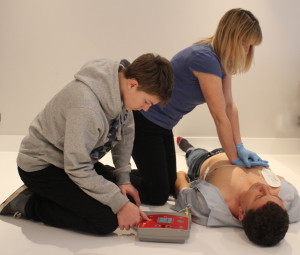Mastering CPR techniques for emergency response is a critical skill that empowers individuals to act confidently and effectively in life-threatening situations. Hands-on learning plays a pivotal role in this process, offering a dynamic and immersive experience that goes beyond theoretical knowledge. The tactile engagement with CPR mannequins provides a realistic simulation of the pressure and rhythm required for chest compressions, allowing learners to develop muscle memory and refine their technique. This interactive approach transforms theoretical concepts into practical proficiency, ensuring that individuals can respond swiftly and appropriately when faced with a real emergency. The hands-on learning experience begins with an understanding of the anatomy and physiology of the human body, laying the foundation for effective CPR.
As participants practice locating the correct hand placement on the chest and coordinating compressions with breaths, they gain a firsthand appreciation for the nuances involved in maintaining blood circulation and oxygenation. Instructors guide learners through the intricacies of proper hand positioning, compression depth, and the balance between compression and ventilation, fostering a comprehensive grasp of CPR fundamentals. Moreover, hands-on learning facilitates the development of crucial interpersonal skills necessary in emergency situations. Effective communication and teamwork are emphasized as participants work together to perform CPR, mirroring the collaborative efforts required in real-life emergencies. The tactile experience of administering CPR also instills a sense of confidence and composure, essential elements when responding to high-pressure situations where quick decision-making is paramount. Simulated scenarios further enhance the hands-on learning experience, allowing participants to apply their acquired skills in realistic emergency situations.
 These scenarios simulate a range of cardiac events, reinforcing the importance of adaptability and quick thinking. By engaging in hands-on practice, individuals not only refine their technical skills but also cultivate the ability to remain calm under pressure, a crucial aspect of successful emergency response. In addition to mastering the physical aspects of CPR, hands-on learning promotes the understanding of AED Automated External Defibrillator usage and check here https://cprcertify4u.com/florida/clermont-fl/. Participants learn how to operate these devices effectively, enhancing their capacity to respond comprehensively to cardiac emergencies. The tactile familiarity gained through hands-on AED training ensures that individuals can confidently integrate this life-saving technology into their emergency response repertoire. The combination of tactile engagement, simulated scenarios, and interpersonal skill development equips individuals with the confidence and proficiency needed to respond effectively in real-life emergencies. As a result, hands-on CPR training stands as an invaluable investment in personal and community safety, empowering individuals to become capable first responders in critical situations.
These scenarios simulate a range of cardiac events, reinforcing the importance of adaptability and quick thinking. By engaging in hands-on practice, individuals not only refine their technical skills but also cultivate the ability to remain calm under pressure, a crucial aspect of successful emergency response. In addition to mastering the physical aspects of CPR, hands-on learning promotes the understanding of AED Automated External Defibrillator usage and check here https://cprcertify4u.com/florida/clermont-fl/. Participants learn how to operate these devices effectively, enhancing their capacity to respond comprehensively to cardiac emergencies. The tactile familiarity gained through hands-on AED training ensures that individuals can confidently integrate this life-saving technology into their emergency response repertoire. The combination of tactile engagement, simulated scenarios, and interpersonal skill development equips individuals with the confidence and proficiency needed to respond effectively in real-life emergencies. As a result, hands-on CPR training stands as an invaluable investment in personal and community safety, empowering individuals to become capable first responders in critical situations.
